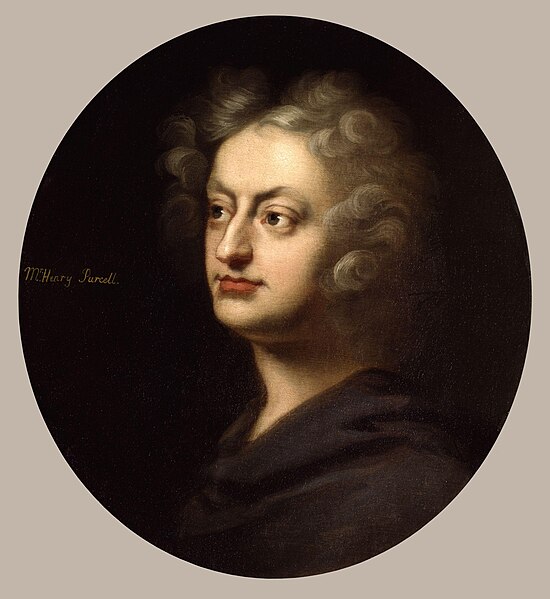 |
| Peter Lely, Portrait of Mary II National Portrait Gallery, London |
Ode and Anthem Celebrate This Festival for the birthday of Queen Mary; Funeral Music for Queen Mary
Concert given at the Basilica of Notre-Dame, Beaune, France as part of the 2009 Beaune International Festival of Baroque Opera
Céline Scheen, soprano
Hana Blazicova, soprano
Alice Foccroulle, soprano
Pascal Bertin, countertenor
Jean-Christophe Clair, countertenor
Jean-Michel Fumas, countertenor
Phillipe Froeliger, tenor
Thibault Lenaerts, tenor
Renaud Tripathi, tenor
Jean-Claude Sarragosse, bass
Lionel Meunier, bass
Malcolm Bothwell, bass
Ensemble La Fenice
conducted by Jean Tubéry
Mary II (1662 - 1694), queen of England, Scotland, and Ireland (1689–94) and wife of King William III. As the daughter of King James II, she made it possible for her Dutch husband to become co-ruler of England after he had overthrown James’s government. Although her father and mother were converts to Roman Catholicism, Mary was brought up a Protestant. In November 1677 she was married to her cousin William of Orange, stadholder of Holland and champion of Protestantism in Europe. She then settled in Holland. During the quarrel (1687–88) between James II and William over James’s pro-Catholic policies, Mary felt it her religious duty to side with her husband. Hence, she agreed to support William’s invasion of England in November 1688. James fled the country in December, and two months later Mary arrived in London.
 |
| John Closterman, Portrait of Henry Purcell National Portrait Gallery, London |
Henry Purcell (1659-1695) was commissioned to supply music for the coronation ceremonies of William and Mary. At this time a change in Purcell's music may be detected, for after the Glorious Revolution he turned to opera, to semiopera (a combined opera, stage play, ballet, and masque), and to more impressive sets of incidental music, showing a mastery of dramatic expression which no English composer ever surpassed.
During Purcell's last years he also wrote a great many other important works, including the Ode to St. Cecilia of 1692, six birthday odes for Queen Mary, the Te Deum and Jubilate in D Major, and a host of songs and dialogues. The music that he had composed the previous year for Queen Mary's funeral was also performed during his own in 1695, aged 36.

No comments:
Post a Comment